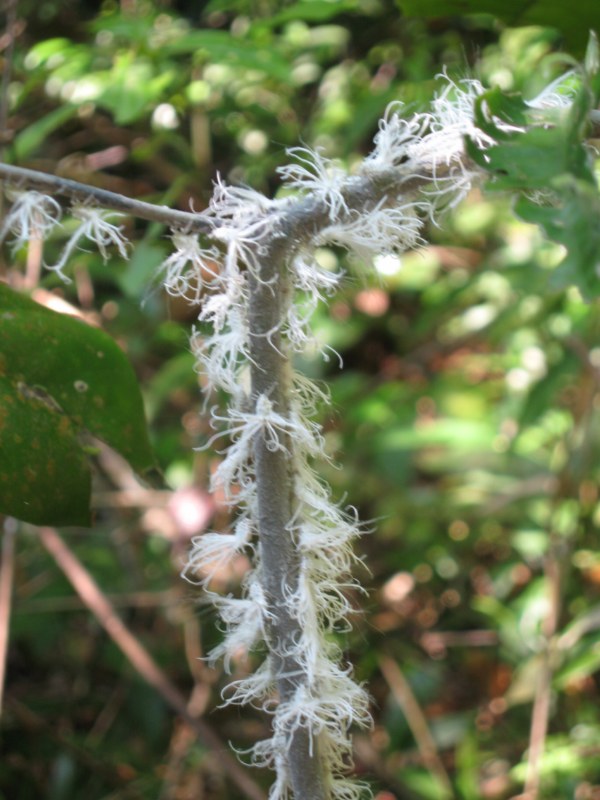Jungle Bugs
From a distance, it looked like a rotten stick, covered in white lichen, such as you might see in Derbyshire, but no! The lichen was moving. I looked more closely. The stick was covered with hundreds of bright white insects, each one decorated with appendages resembling flower parts, tiny stamens, bifurcate stamens, delicate microscopic petals. A wonderful mimicry, but where were the flowers? There were none, just a stick covered in insects. And what kind of insects were they? I later found out they were the larvae of leafhoppers, the same miniature bugs that hide themselves in blobs of cuckoo spit by secreting foam from their anus.
A magnificent butterfly, I thought, so eye-catching in its dress uniform of red and black with white flashes, but it’s forewings were long, black and lacy and used for propulsion; only the hind wings were designed for display, like banners or the logo on tail of an airliner with its fuselage painted the brightest red. No butterfly this, but a magnificent lacewing, some two inches from wingtip to wingtip. It flew in figures of eight but always returned to dip its abdomen in the same patch of wet sand and deposit a few more eggs.
They call them inch worms, but they don’t slither along like most worms, they grab with their mouth parts then bring their nether regions up, folding their body like a paper clip before stretching forward again. Not that they move very much; they lie in wait in the damp shade under leaves for months and then drop off and attack themselves to any large mammal (like us), who comes past and brushes against the vegetation. They are so sticky, wipe them off with your hand and, like burrs, they stick to your fingers. But most of the time, you don’t know they’re there unless you knock them and they burst in a pool of blood. Leeches secrete an anaesthetic and an anticoagulant. They inch their way into your clothing and secretly latch on to a tender area of naked skin and only detach when they are full and distended, whereupon they seek moisture and shade for their long digestion.



